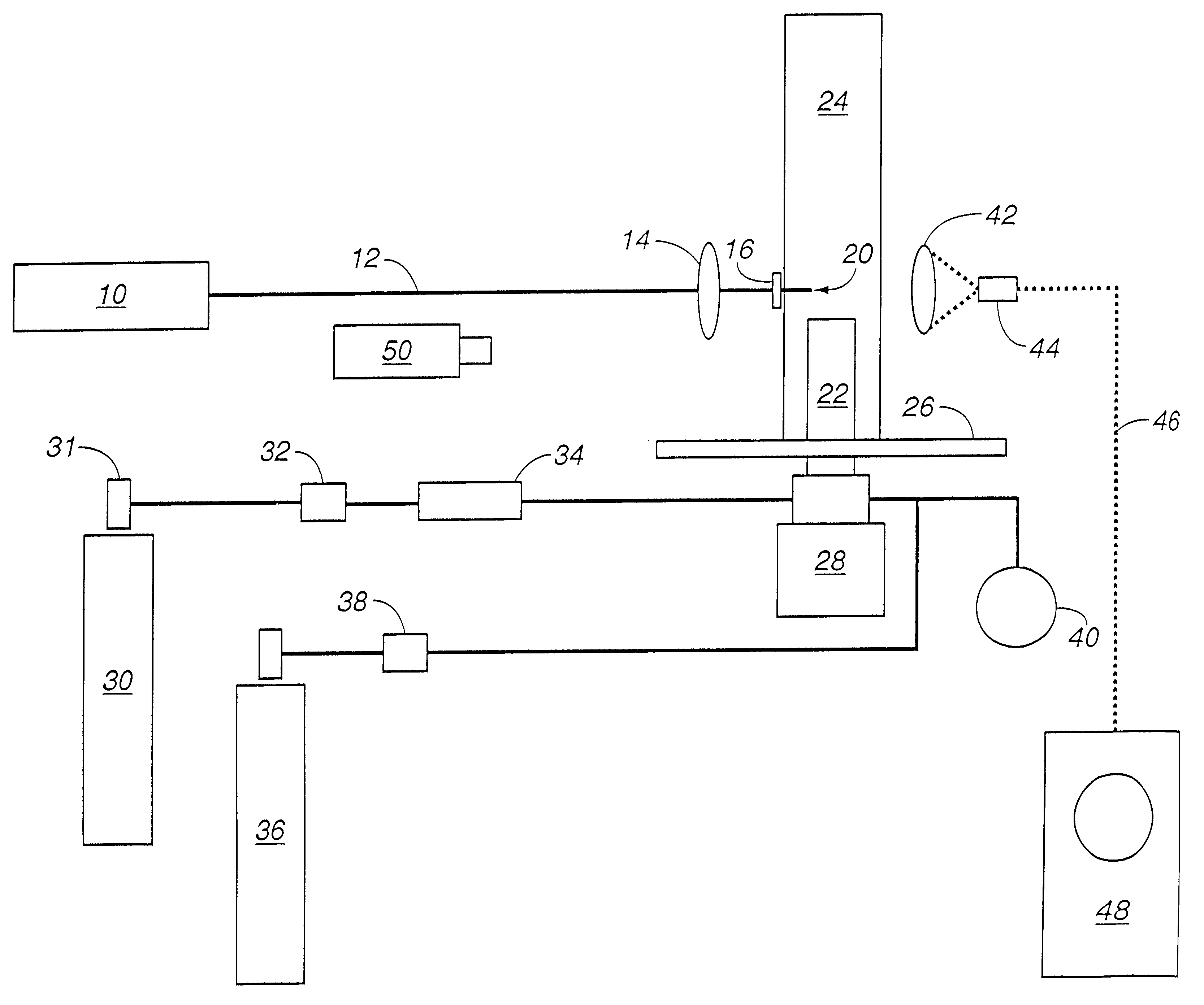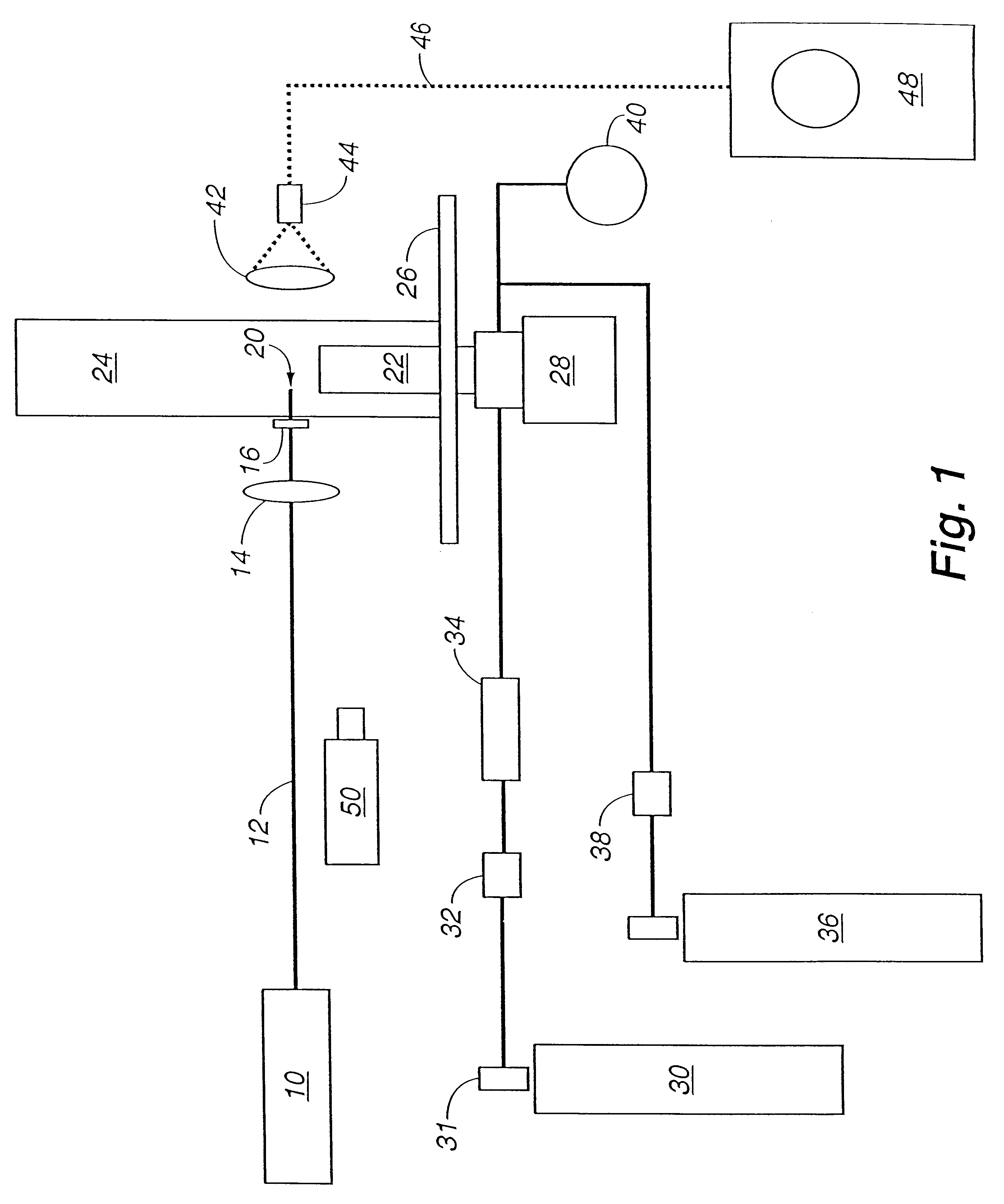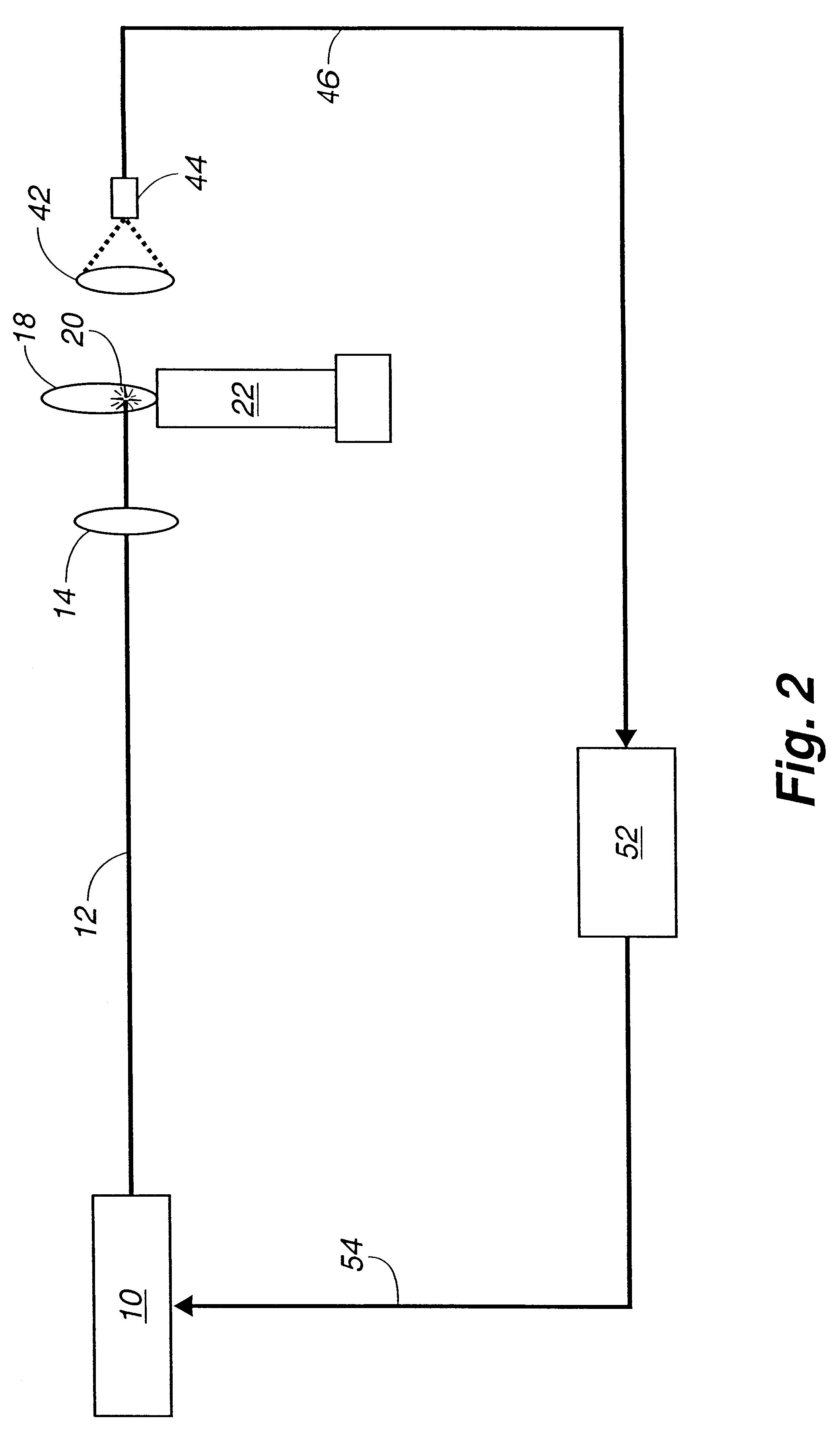Laser controlled flame stabilization
a technology of flame stabilization and laser control, which is applied in the direction of burner control devices, combustion types, lighting and heating apparatus, etc., can solve the problems of inability to sustain flames and unstable combustion processes
- Summary
- Abstract
- Description
- Claims
- Application Information
AI Technical Summary
Problems solved by technology
Method used
Image
Examples
examples
The following examples will demonstrate the operability of the invention. In the following examples, a series of test runs were made to determine the ability of a laser generated air breakdown spark to stabilize the lean burn combustion of methane / air mixtures in accordance with the invention. Flame stabilization was characterized as a function of methane / air mixture composition, total gas flow rate, laser pulse repetition frequency and laser spark location within the combustible gas flow. In Examples IV and V, performance of the invention method was compared directly with performance of a continuous pilot flame of the kind typically used for the selected conditions.
In each of the examples, a swirl injected natural gas nozzle designed and fabricated by CFD was used for fuel introduction. The swirl injected natural gas nozzle was a 1 / 20-scale version of an injector used for commercial electric power turbines.
A Q-switched Nd:YAG laser, pressure and flow monitoring instrumentation, equ...
example i
A set of 12 runs was made to investigate the lean blowout limit for various flows of methane and air with and without the presence of the laser spark stabilization.
The laser was operated at an output pulse energy of 95 mJ and at a repetition rate of either 1 or 3 Hz. The spark generated by the focused laser light was positioned about 3 mm above the top of the nozzle and at the middle of the annular area of the nozzle output, thus permitting recirculation of the lean fuel / air mixture.
In the 12 runs of this example, the combustion tube was placed over the nozzle and oriented so that the tube window was centered upon the focused laser light. Also, the air holes below the nozzle were closed to prevent the entrainment of outside air.
Fuel was introduced to the nozzle and ignited by applying a laser spark. The laser light was then blocked and air flow to the nozzle was established. Air flow was then adjusted to the desired .DELTA.P and maintained at that setting. With the laser off, the fl...
example ii
A second set of runs were made in a manner identical to that described above for Runs 1 through 12 with the exception of the addition of entrained air obtained by opening in the combustion tube below the nozzle.
About the same results were obtained as in the first series of runs with approximately a 5% difference between invention stabilized and comparison unstabilized output limits. In each of these runs, a considerable flicker in the light output of the flame was observed near the extinction limit under both the laser stabilized and free burn conditions.
PUM
 Login to View More
Login to View More Abstract
Description
Claims
Application Information
 Login to View More
Login to View More - R&D
- Intellectual Property
- Life Sciences
- Materials
- Tech Scout
- Unparalleled Data Quality
- Higher Quality Content
- 60% Fewer Hallucinations
Browse by: Latest US Patents, China's latest patents, Technical Efficacy Thesaurus, Application Domain, Technology Topic, Popular Technical Reports.
© 2025 PatSnap. All rights reserved.Legal|Privacy policy|Modern Slavery Act Transparency Statement|Sitemap|About US| Contact US: help@patsnap.com



